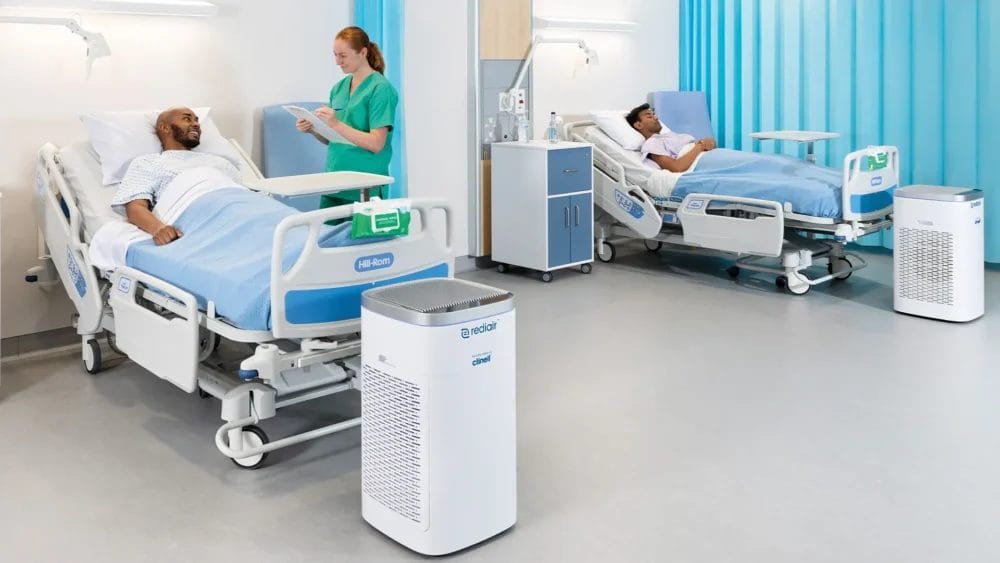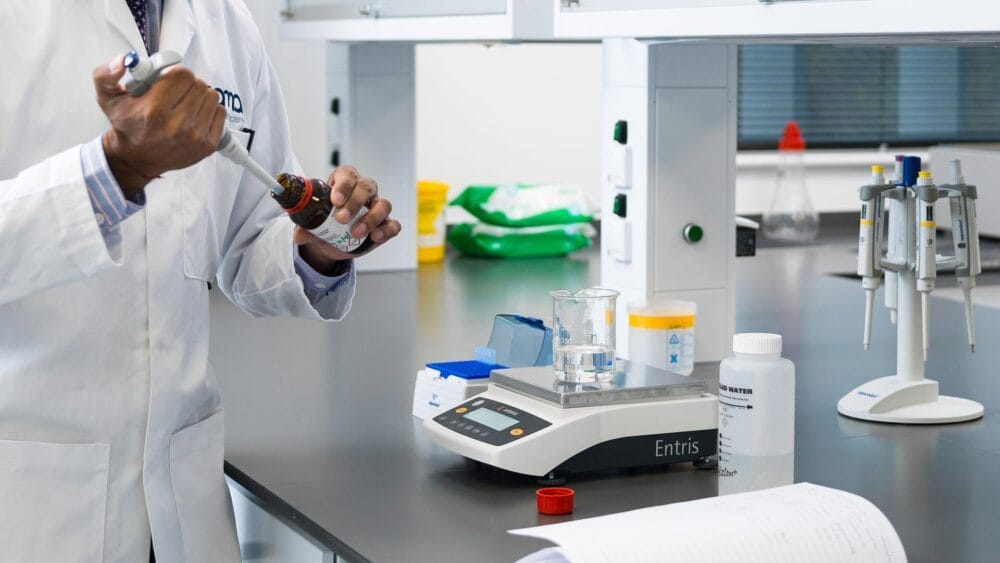Posted
13th January 2023
Research
Our Clinical team discuss how the traditional distinction between “droplet” and “aerosol” transmission-based precautions, no longer seem relevant and how we should consider moving towards a combined set of “respiratory” precautions.
One of the most absorbing aspects of the COVID-19 pandemic, from a technical point of view, has been the developing understanding of the transmission dynamics of the SARS-CoV-2 virus.
Initially, “airborne” transmission (the involvement of very small virus-containing droplets) was thought to be a rare occurrence with SARS-CoV-2. As the pandemic has gone on, it has become clear that not only is airborne transmission more common than first thought, but the distinction between “droplet” and “airborne” spread isn’t particularly accurate or helpful.
The direction of travel seems to be towards “respiratory precautions”, which would include a mixture of what has traditionally been applied as “droplet” or “airborne” precautions.
Droplet vs. aerosol precautions
If you read IPC textbooks and pre COVID-19 literature, you’ll frequently come across the idea of pathogens spreading by “droplet” or “aerosol” routes.
Droplet spread involves larger particles, typically defined as >5 mm, which are considered to fall out of the air and onto surfaces within a couple of metres of their origin. Aerosol spread involves smaller particles, typically defined as <5 mm, which remain suspended in the air for much longer and can travel over longer distances.
Built on this foundation was the idea of “droplet” and “airborne” transmission-based precautions. One example of the difference in precautions is the choice of mask, with surgical/medical masks considered adequate for droplet precautions, but FFP3/N95 respirators required for airborne precautions.

Microorganisms that typically fell into the droplet precaution category, included influenza and SARS-CoV-2 (at least initially), and those that fell into airborne precautions included measles and active TB infection. One nuance to this approach is so-called “aerosol generating procedures”. These are some medical procedures that effectively convert a droplet pathogen into an airborne one, through the generation of very small virus-containing airborne particles (commonly referred to as aerosols).
Related article: Demystifying portable air filtration units in healthcare
The foundation for “droplet” & “airborne” precautions has unravelled
So, what has changed? In a sense, nothing has changed. Whilst SARS-CoV-2 has become more transmissible over time with newer variants, the fundamental transmission characteristics of the virus have not changed. However, there is now widespread recognition that airborne spread is commonplace for SARS-CoV-2. Perhaps even more importantly though, the foundation for “droplet” and “airborne” precautions has basically unravelled.
When you look into it, virus-laden respiratory particles are emitted in a continuum of sizes, and it is a big over simplification to say that the ones >5 mm fall to the floor within a couple of metres.
Related research: Dismantling myths on the airborne transmission of severe acute respiratory syndrome coronavirus-2 (SARS-CoV-2)
Worth adding here, is that this isn’t an entirely new challenge. Even before the pandemic, there was much discussion about how realistic and helpful the distinction between droplets and aerosols really was, and how reliable “aerosol generating precautions” really are in managing infection risk.
Related research: Exposure to influenza virus aerosols during routine patient care

Moving towards a combined set of “respiratory” precautions
So where does this leave us? The traditional distinction between “droplet” and “aerosol” transmission, and the related “droplet” and “airborne” transmission-based precautions, no longer seems to be a good reflection of our current understanding of the evidence. Instead, most people are moving towards a combined set of “respiratory” precautions, which would involve a mixture of the various elements of “droplet” and “airborne” precautions depending on the pathogen, setting, and factors related to the patient.
If you’d like to read more research from the GAMA Healthcare team head to the Research section on our blog. Help spread the word by sharing this article on social media.
SHARE THIS ARTICLE
Tags
Latest News
Introducing HEXI HUB: A seamless transition in our product line
We’re pleased to announce an update to our product offering…
Innovative solutions for tackling Carbapenemase-producing Enterobacteriaceae (CPE) at King’s College Hospitals
King’s College Hospital NHS Foundation Trust, one of London’s largest…
Gloves Off: reducing unnecessary plastic waste during environmental cleaning and disinfection
In this blog, Dr Phil Norville discusses the momentum-gaining ‘Gloves…
Gloves Off: Navigating SDS sheets and skin safety claims in environmental decontamination products
In this blog, James Clarke (Head of R&D, Science &…





